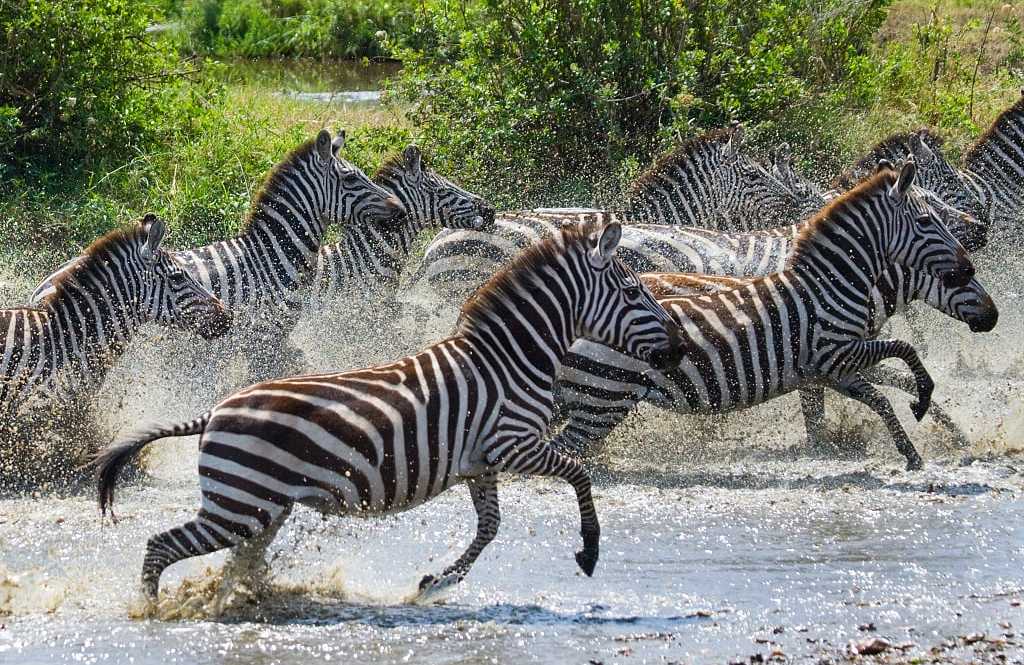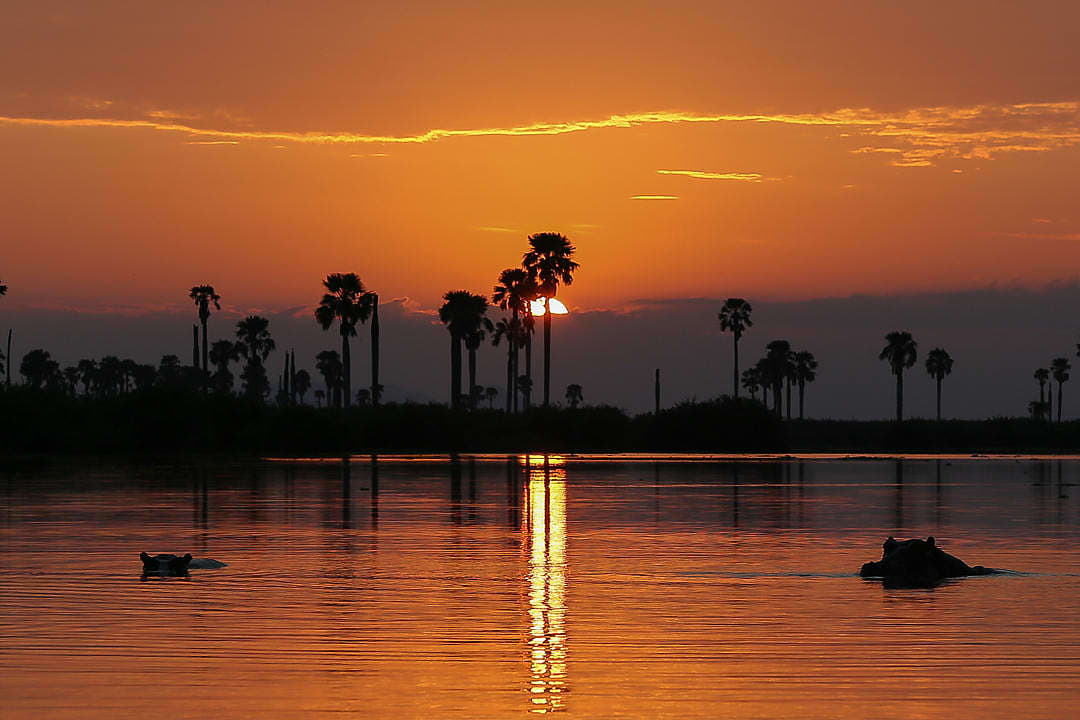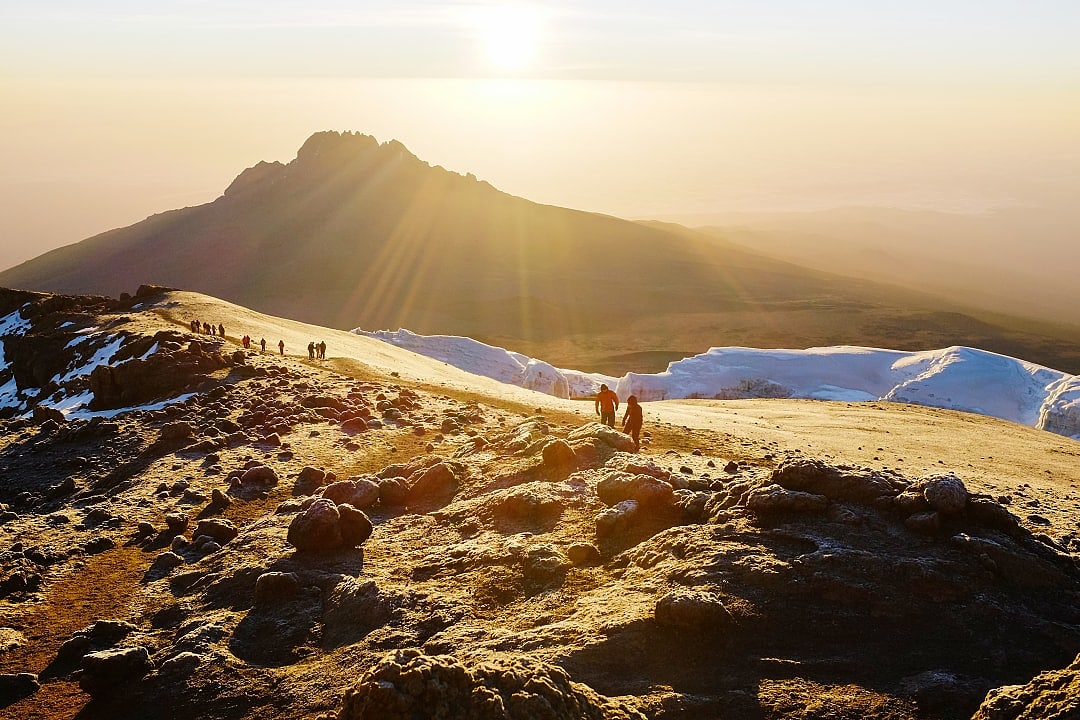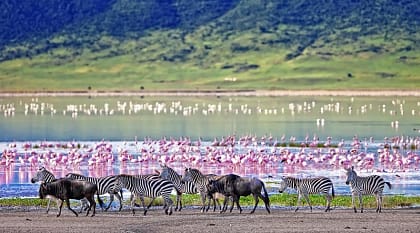Many travelers wonder how a Tanzania safari compares to one in its equally famous neighbor, Kenya. While both countries offer breathtaking wildlife experiences, Tanzania distinguishes itself through its immense scale, unique geographical landmarks, and the sheer scope of its safari adventures.
The answer lies in understanding the key differences. Tanzania is a land of superlatives: the endless, unfenced plains of the Serengeti dwarf the Maasai Mara, the magnificent Ngorongoro Crater holds a self-contained animal kingdom unlike anywhere else on Earth, and the snow-capped peak of Mount Kilimanjaro offers the challenge of climbing Africa’s highest peak. Tanzania also hosts the vast majority of the Great Migration's cycle and offers exclusive experiences like chimpanzee trekking, which are not readily available in Kenya.
This guide compares a safari in Tanzania versus Kenya, highlighting the unique selling points that make the former a legendary choice for first-time visitors and seasoned safari enthusiasts.
Tanzania vs Kenya: Key Comparisons
Before exploring the landscapes, it’s helpful to address the practical questions that shape a safari plan.
Cost of a Safari in Tanzania vs Kenya
Both countries offer a wide range of options, but a luxury safari in Tanzania is often priced slightly higher than a comparable trip in Kenya. In 2025, a high-end Tanzanian safari typically ranges from $1,200 to over $3,000 per person, per night. This premium reflects several factors:
- Higher Park and Concession Fees: Tanzania's government park fees, particularly for the Ngorongoro Conservation Area and the Serengeti, are among the highest in Africa.
- Logistical Complexity: The sheer scale of the parks means longer driving distances or a greater reliance on internal flights, adding to operational costs.
- Exclusivity: The higher cost structure naturally leads to a more exclusive experience with fewer crowds in many areas compared to the most popular parts of the Maasai Mara.
Tanzania commands a premium for its vast scale and unparalleled geographical wonders, which many travelers find to be a worthwhile investment.
Best Time for the Great Migration in Tanzania vs Kenya
The Great Migration is a year-round, circular journey, but the key events happen in different locations at different times. Tanzania is where the migration spends the majority of its time.
- Tanzania, January to August: This is the ultimate destination to see the full life cycle. The crucial calving season, where tens of thousands of wildebeest are born, occurs from January to March in the Southern Serengeti. This is a dramatic time with immense herds and high predator action. The herds then move north, culminating in the first river crossings of the Grumeti River around June.
- Kenya, late July to October: The Maasai Mara is world-famous for the dramatic Mara River crossings. During these months, the herds are concentrated in this smaller reserve, offering fantastic game viewing.
For the dramatic river crossings in a compact area, choose Kenya from August to October. For the sheer scale of the herds and the incredible drama of the calving season, choose Tanzania from January to March.
The Scale of the Serengeti Ecosystem
While the Maasai Mara is an extension of the same ecosystem, the Serengeti National Park is vastly larger, offering a profound sense of untamed wilderness.
- Sheer Size: The Serengeti covers approximately 5,700 square miles, nearly 10 times the size of the Maasai Mara National Reserve, which is about 580 square miles.
- Unfenced Wilderness: This immense, unfenced landscape allows wildlife to roam freely according to ancient migratory patterns, creating a dynamic and unpredictable safari experience. Game drives in the Serengeti can feel like you have the entire African continent to yourself.
Find inspiration for your own adventure with our sample Tanzania Northern Circuit Wildlife Safari and Zanzibar.
The One-of-a-Kind Ngorongoro Crater
The Ngorongoro Crater is a unique geographical landmark unmatched anywhere in Africa. This massive, unbroken caldera provides a sanctuary for an astonishing concentration of wildlife.
Is the Ngorongoro Crater Worth It Compared to the Maasai Mara?
Absolutely. The experience is completely different. The Maasai Mara is a vast, open savanna. The Ngorongoro Crater is a self-contained, 100-square-mile ecosystem on the floor of an ancient volcano. Its scenic beauty is breathtaking, and the density of wildlife is unparalleled.
Can You See the Big Five in the Ngorongoro Crater in One Day?
Yes, it is one of the best places in Africa to try. Due to its contained nature and abundant wildlife, it is highly possible to see lion, leopard, elephant, buffalo, and the critically endangered black rhino all during a single game drive on the crater floor.
The Full Circle of the Great Migration
The Great Wildebeest Migration is the most awe-inspiring wildlife spectacle on Earth, and Tanzania is its main stage.
- The Majority of the Cycle: Nearly 10 months of the migration's cycle occurs within Tanzania. This includes the dramatic calving season from January to March, the long trek north, and the first river crossings.
- Calving Season: From January to March in the southern Ndutu region, witness the heartwarming spectacle of thousands of newborn wildebeest. This explosion of life attracts a high concentration of predators, making it one of the most action-packed times for a safari.
Plan your trip to coincide with this incredible spectacle with our Great Migration in Africa: Where, When, and how to See It guide.
Exclusive Chimpanzee Trekking
Beyond the classic savannas, Tanzania offers a rare opportunity to trek for chimpanzees—an experience not offered on safari in Kenya.
- Remote Wilderness: In the lush, forested mountains of Gombe and Mahale National Parks on the shores of Lake Tanganyika, you can track our closest living relatives in the wild.
- Intimate Encounters: The reward is an unforgettable hour spent observing the complex social lives of a chimpanzee family.
Is Chimp Trekking in Mahale Difficult?
It can be challenging. The terrain is steep, forested, and there are no roads, so treks are done on foot. A good level of fitness is required, as hikes can last several hours. However, for most active travelers, the experience is incredibly rewarding and manageable with the help of expert trackers.
Combine a classic safari with this unique experience on our Serengeti and Off-the-Beaten-Track Safari in Tanzania.
The Challenge of Mount Kilimanjaro
While Mount Kilimanjaro’s iconic peak can be seen beautifully from Kenya's Amboseli National Park, it can only be climbed from Tanzania.
- "The Roof of Africa": As the world’s tallest free-standing mountain, it offers the challenge of a lifetime—a journey through five distinct climate zones to the summit.
- A Hiker's Paradise: Even if you don’t wish to climb, its magnificent presence provides a stunning backdrop for any safari in northern Tanzania and serves as a powerful symbol of the continent's natural grandeur.
For more information, take a look at our Mountains in Africa You Should Explore guide.
The Perfect Bush and Beach Vacation with Zanzibar
Tanzania offers the ultimate luxury travel combination: a thrilling safari followed by pure relaxation on a paradise island.
- Seamless Logistics: The exotic Zanzibar archipelago is just a short flight from the northern safari circuit.
- How to Add Zanzibar After a Serengeti Safari: It's incredibly easy. Small planes fly directly from various airstrips within the Serengeti to Zanzibar, often in just a couple of hours. You can go from a morning game drive to relaxing on a white-sand beach by late afternoon.
Create the perfect family getaway with our African Family Vacation: Safari and Sandy Beaches itinerary.
Wild and Remote Southern Circuit
For seasoned travelers, Tanzania’s Southern Circuit, which includes the Nyerere and Ruaha national parks, offers a wild, remote, and deeply authentic safari that contrasts with the more popular routes in both countries. It’s a haven for those seeking solitude and unique activities like boating and walking safaris.
Diverse Safari Accommodation Styles
A luxury safari in Tanzania is complemented by a remarkable range of accommodations, from opulent lodges with breathtaking views to classic tented camps that offer a romantic, under-canvas experience without sacrificing comfort.
Choose the perfect accommodation style for your adventure by exploring the Three Types of Safari Accommodations and How to Choose.
Amazing Cultural Connections
Tanzania is a country of immense cultural richness, with over 120 ethnic groups coexisting in harmony. A journey through Tanzania is an opportunity to connect with this fascinating melting pot, from the red-robed Maasai warriors to the historic Swahili culture of the coast.
Delicious and Diverse Cuisine
A journey through Tanzania is also a feast for the senses. Known as the "Spice Island," Zanzibar is the heart of the country's aromatic cuisine, infusing dishes with flavors like cinnamon, cloves, and nutmeg for a unique culinary experience.




















